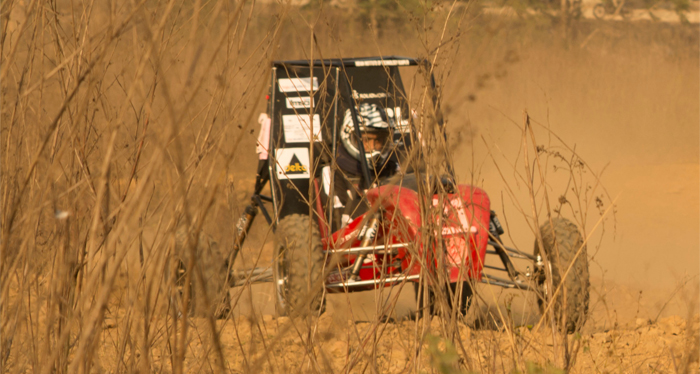 |
 Download pdf
Download pdfCover Story: Advanced Imaging Facility at IIT KanpurAdvanced Imaging at IIT Kanpur was started with a generous internal grant from the Institute to procure high-resolution transmission electron microscopes for researchers engaged cutting-edge materials research. State-of-the-art building infrastructure was created to house these microscopes, which also consists of sample preparation and wet laboratory facility, and conference rooms. The following machines are installed/being installed: FEI Titan G2 60-300 TEM and FEI TECHNAI G2 12 Twin TEM; ultramicrotome for room and cryo-temperature sectioning and a Vitrobot for vitrification process.
|
FMFP 2014The 5th International and 41st National conference on Fluid Mechanics and Fluid Power (FMFP-2014) was organized at IIT Kanpur during December 12-14, 2014. A total of 418 participants registered and attended this conference. Prof. Sumanta Acharya from University of Memphis, USA was the chief guest of the conference. The Plenary lecture was delivered by Prof. M. G. Worster, University of Cambridge and seven keynote lectures were delivered by eminent researchers from academia and industry. Technical presentations in eight parallel session, poster sessions on the current state-of-the–art research and technically challenging industrial applications in the areas of computational fluid dynamics, turbulence, turbomachinery, multiphase flows and nuclear reactor thermal hydraulics and displays from several industrial sponsors were organized.
|
||
Industry Connect Talk SeriesIn The Industry Connect Talk Series, organized by the Industrial Dr. Badri Gomatam and Dr. Arvind Mishra from the Sterlite Technologies Limited delivered a talk on 27th November, 2014. Sterlite Technologies Limited (STL), Aurangabad develops & delivers products, solutions and infrastructure for telecom & power transmission networks, globally. STL is among the global leaders in all its business areas of Optical Fiber, Fiber Optic Cables, Power Conductors and HV / EHV Power Cables through its operations in India, China & Brazil. Areas of possible collaboration were discussed. A possibility of supporting fellowships for students is under discussion.
|
||
Tinkering all the Way!Tinkering Laboratory is a platform for the student community of IIT Kanpur to try out ideas, iterate on designs, work with their own hands, put their ideas into action, and bring concepts to fruition. It has enabled the students to build large engineering devices, develop complex systems and represent IIT Kanpur at various national and international competitions. Several student projects, national and international competitions have been accomplished in the laboratory. There are many student teams who are extensively using the facilities at Tinkering Lab for the events such as ROBOCON, a major festival for robotics enthusiasts, National Student Competition on Student AUV (SAVe), BAJA student India 2015 and other Formula Racing events. Tinkering Lab presently witnesses 18-20 student footfalls per day with students from all departments, batches and program working on various academic as well as club projects under the Science and Technology Council, IITK. It greatly helps the cause that the laboratory is open beyond the usual working hours.
With “learning by doing” as its motto, Tinkering Lab is evolving each passing day. Along with the conventional In its bid to inspire the students to unleash their manufacturing skills, Tinkering Lab also organizes 'Tinker Trips' to introduce them to various modern machining processes and to put their ideas into action at on-the-spot competitions. Tinkering Lab further envisions to create a design environment where students can not only develop their ideas into mechanical models and working prototypes but also intellectual property and patents. This process has already started with BT projects getting patented in the last few years. visit Tinkering Lab at http://www.iitk.ac.in/cw/ Contact: Prof. Sameer Khandekar (samkhan@iitk.ac.in) |
||
Centre of Excellence for Large Area Flexible Electronics
Key-Personnel: Prof. Monica Katiyar, Prof. Baquer Mazhari, Prof. Y.N. Mahapatra, Prof. Deepak Gupta, Prof. Ashish Garg, Prof. Siddhartha Panda, Prof. S. Sundar Kumar Iyer, Prof. Anshu Gaur Sponsor: Department of Electronics and Information Technology (DeitY) A Proposal from Samtel Centre for establishment of Centre of Excellence for Large Area Flexible Electronics at IIT Kanpur was approved in the month of November, 2014 by the Department of electronics and information technology (DeitY). Large area electronics is on the threshold of an imminent revolution that is driven by innovative applications made possible at a much lower cost than conventional methods of manufacturing. At the heart of this revolution lie two significant capabilities: designing products that are flexible and form fitting, and their manufacturing by printing based processes. The combination of the two will lead to roll-to-roll, large volume and high throughput manufacturing much the same way as newspapers are printed on substrates that are plastics, paper, textiles or metal foils. The applications of this technology are wide and diverse including sectors such as consumer electronics, energy and health. Owning to use of new materials and methods of manufacturing, Flexible Electronics represents a break from the past and provides India with a fresh opportunity to become a significant manufacturer of electronics. The aim of the centre is to act as a catalyst for development of flexible electronics industry in the country. Its objectives include development of a national technology roadmap in coordination with other academic and industrial partners in the country, establishment of a broad research program that leads to development of a critical set of electronic components and partner with industry to develop prototypes and commercialize the technology. The Centre would endeavor to facilitate development of a complete ecosystem for flexible electronics by bringing together equipment, material and product industry and academic and government research and development Centres. The center would have a dedicated building, an interdisciplinary team of more than 50 scientists and engineers and state of the art facilities for fabrication and characterization of electronic components on flexible substrates using printing technology. The Centre has a broad mandate and would benefit from participation and suggestions from all faculty, research staff and students. Samtel Centre will house the Centre for Flexible Electronics till the construction of a new building. For further details visit http://www.iitk.ac.in/scdt/ |
||
Investigating the Role of Retinoic Acid
Signaling in the
PI: Prof. Jonaki Sen, Dept. of Biological Sciences & Bioengineering Co-PI: Prof. Amitabha Bandyopadhyay, Dept. of Biological Sciences & Bioengineering Sponsor: Department of Biotechnology The forebrain in vertebrates develops through an intricate process involving the complex interaction of multiple regulatory factors. We have recently discovered a novel function of retinoic acid (RA), a vitamin-A derived molecule, in forebrain development. RA appears to be critical for separation of the single forebrain vesicle into two cerebral hemispheres in the chick embryo. In fact a block in RA activity leads to the failure of separation of the two cerebral hemispheres. This results in a condition closely resembling a devastating developmental disorder in humans known as holoprosencephaly (HPE). This grant aims to characterize the role of RA in this process and elucidate any interactions of RA with other molecules in this context using the chick embryo as a model. It is very likely that understanding this process at the molecular level will shed light on the etiology of developmental disorders such as HPE in humans. |
||
Development of Sinter-Resistant
|
||
Courts, Networks and Start-Ups: Institutions
|
||
Dynamic Graph Algorithms
|
||
Fluid Dynamical Methods for Gravity
| ||
News from SAE ClubThe students of SAE Club, IIT Kanpur have designed and manufactured an off-road racing vehicle using institute's in-house The team recently participated in the Baja Student India 2015 competition held at NIT Jamshedpur from January 5th – 11th, 2015 and was awarded with the best incoming winner trophy.
|
Feedback/Suggestions
dord@iitk.ac.in |
Address for Correspondence
Dean, Research & Development http://www.iitk.ac.in/dord |

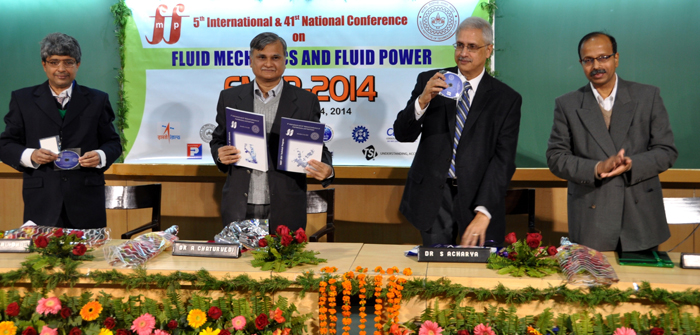
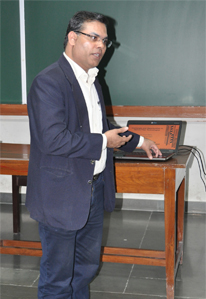 Collaboration Advisory Group (ICAG), speakers from the industry are invited to present their company's research areas of interest to explore possibilities of collaboration with researchers at IIT Kanpur.
Collaboration Advisory Group (ICAG), speakers from the industry are invited to present their company's research areas of interest to explore possibilities of collaboration with researchers at IIT Kanpur.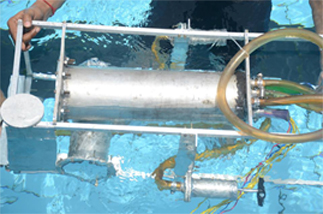
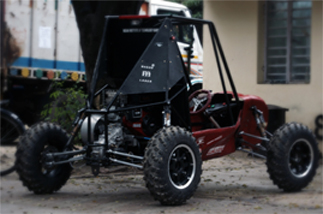
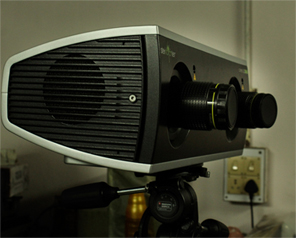 machining setups for drilling, milling, lathe, sheet metal working and welding, Tinkering Lab has been equipped with the latest technologies like 3d Scanner, Injection Molding Machine and Water Jet Cutting machine to accelerate the manufacturing process and to enable the students to design, model, manufacture and inspect the sophisticated machine parts. It has also added a series of electronic devices such as function generator, controllable power supply and oscilloscopes and a wide selection of raw materials and fittings for use by students.
machining setups for drilling, milling, lathe, sheet metal working and welding, Tinkering Lab has been equipped with the latest technologies like 3d Scanner, Injection Molding Machine and Water Jet Cutting machine to accelerate the manufacturing process and to enable the students to design, model, manufacture and inspect the sophisticated machine parts. It has also added a series of electronic devices such as function generator, controllable power supply and oscilloscopes and a wide selection of raw materials and fittings for use by students.  Development of Medical Forebrain Structures
Development of Medical Forebrain Structures
 Nanoparticles Encapsulated by Zeolite
Nanoshell as Bifunctional Catalyst
Nanoparticles Encapsulated by Zeolite
Nanoshell as Bifunctional Catalyst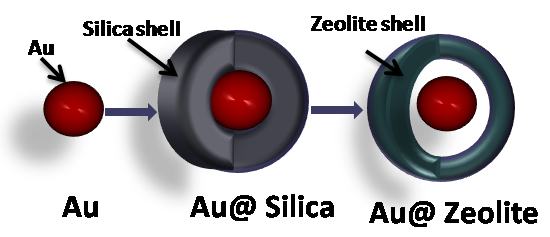

 Matter for South-Asian Small Enterprises
Matter for South-Asian Small Enterprises

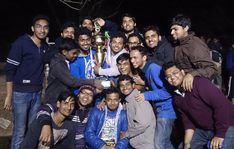 facility. The car is powered by a Briggs and Stratton 305cc engine coupled with a Continuously Variable Transmission (CVT) and a FNR gearbox. This setup gives a peak Torque of 560 N-m after final reduction, and makes the car capable of climbing an inclination of 410 from a dead stop. Maximum tested speed of the vehicle so far is 55 kmph, which will go up further with testing and tuning. The car has an adjustable double wishbone suspension at the front and a
3-link trailing arm suspension at the rear. 4-wheel hydraulic disc brakes with custom designed rotors are capable of producing a deceleration of 0.9g. The car has ergonomically designed pedal assembly to facilitate driver comfort and has large traction forces for a safe and thrilling ride in off-road conditions.
facility. The car is powered by a Briggs and Stratton 305cc engine coupled with a Continuously Variable Transmission (CVT) and a FNR gearbox. This setup gives a peak Torque of 560 N-m after final reduction, and makes the car capable of climbing an inclination of 410 from a dead stop. Maximum tested speed of the vehicle so far is 55 kmph, which will go up further with testing and tuning. The car has an adjustable double wishbone suspension at the front and a
3-link trailing arm suspension at the rear. 4-wheel hydraulic disc brakes with custom designed rotors are capable of producing a deceleration of 0.9g. The car has ergonomically designed pedal assembly to facilitate driver comfort and has large traction forces for a safe and thrilling ride in off-road conditions. 